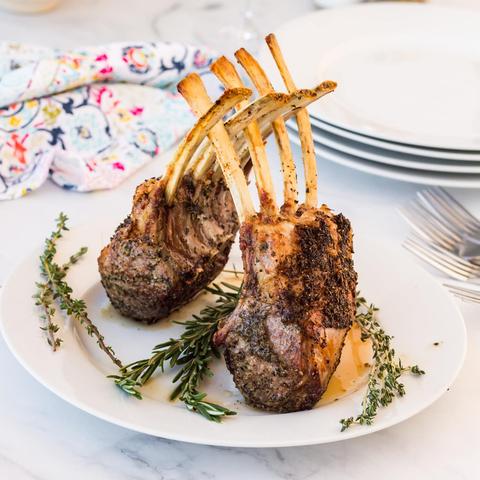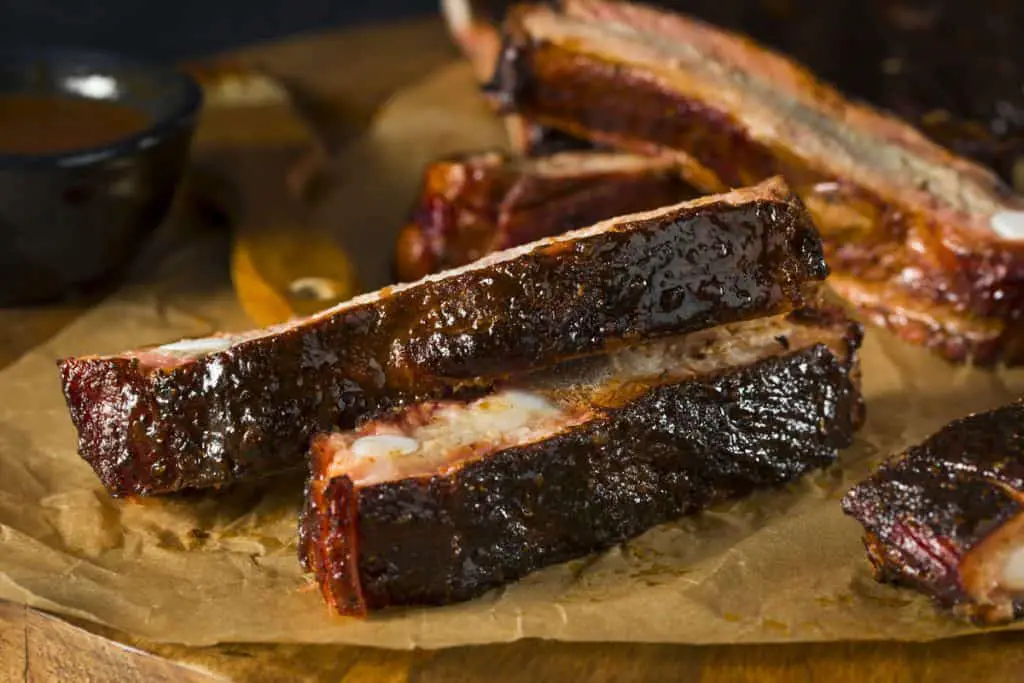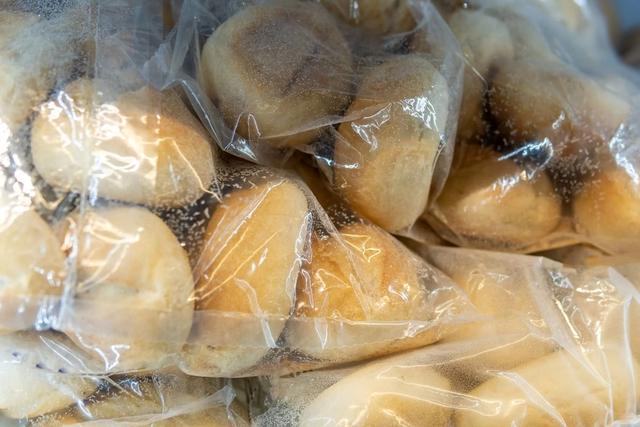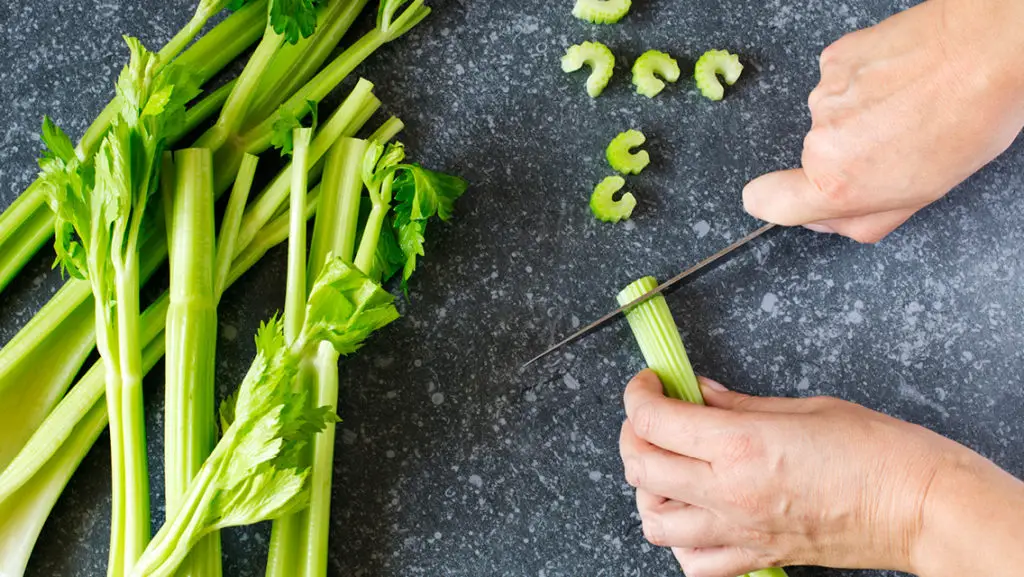
If you’ve ever wondered what celery heart is, you’re not alone. This lesser-known vegetable can be found in the center of celery stalks and has a milder flavor than the leaves. Celery heart is a good source of vitamins A and C, as well as potassium. It can be eaten raw or cooked and is a great addition to salads, soups, and other dishes. If you’re looking for something new to try, give celery heart a try!
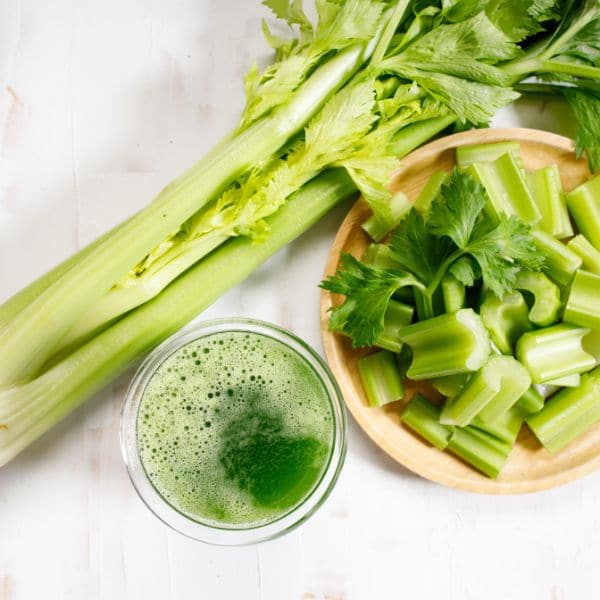
What is Celery?
Celery is a crunchy, refreshing vegetable that is often used in salads and as a low-calorie snack. Celery is a good source of fiber, vitamins A and C, and potassium. It can be eaten raw or cooked and is a versatile ingredient in many recipes. If you’re looking for a healthy way to add some extra flavor and nutrition to your diet, give celery a try!
What is Celery Heart?
Celery hearts are just cleaned-up celery without all the leaves and the outer (often tougher) stalks. You can effectively buy “normal” celery, take off around 4 outer stalks, chop off the top of the celery where the leaves are, and voila, you’ve got a celery heart.
What is Celery Root (Celeriac)?
Celery root (more correctly called celeriac) is the “root” (it’s technically a tuber even though it’s called a root) of a type of celery plant (so your “normal” celery does not have that big bulb hanging onto it).
It’s often used as a low-carbohydrate alternative to potatoes. Celeriac has a slightly nutty taste and can be eaten raw or cooked. It’s a good source of fiber, vitamins C and B6, and potassium. If you’re looking for a healthy way to add some extra flavor and nutrition to your diet, give celery root a try!
Celeriac is great for soups, mash, casseroles, and stews (like other root vegetables).
What about Celery Seeds?
Celery seeds come from the same plant as celery, but they are much smaller. They have a slightly bitter taste and are often used as a flavoring or spice in recipes. Celery seeds are a good source of vitamins A and C, as well as dietary fiber. If you’re looking for a new way to add some extra flavor to your dishes, give celery seeds a try!
What’s Pink Celery?
Pink celery is a variety of celery that has a pinkish hue. It is slightly sweeter than other types of celery and has a crispy texture. Pink celery is a good source of vitamins A and C, as well as dietary fiber.
What do celery hearts taste like?
Celery hearts have a milder flavor than the other parts of the stalk and are often eaten raw in salads or dipped in hummus. Celery heart can also be cooked and added to soups, stews, or stir-fries. Thanks to its high water content, celery heart is a great way to stay hydrated and get some nutrients into your diet. Check out these delicious recipes below that use celery hearts!
What’s The Difference Between Celery And Celery Hearts?
Celery hearts are the innermost stalks of celery, and they are usually white or light green in color. They have a milder flavor than other parts of the celery stalk and are often eaten raw in salads or as a healthy snack. Celery hearts can also be cooked and added to soups, stews, or stir-fries. Thanks to their high water content, celery hearts are a great way to stay hydrated and get some extra nutrients into your diet.
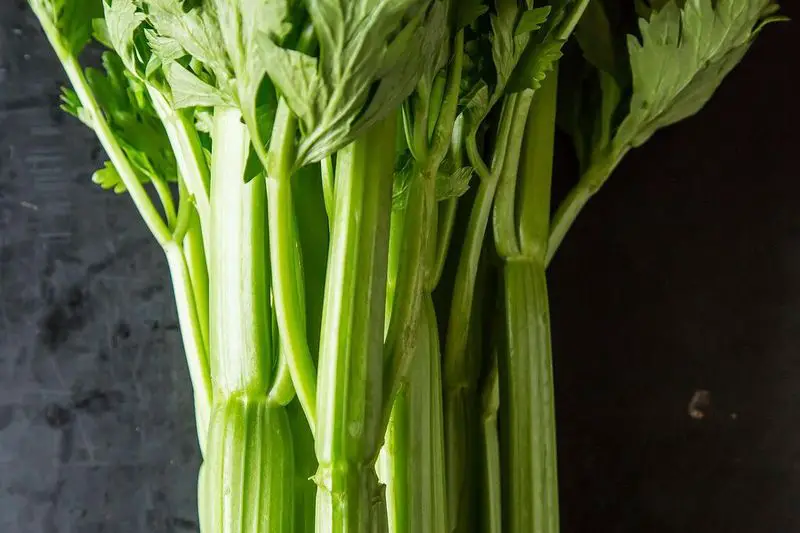
Should I Use Celery Hearts For Making Juice?
Celery hearts are a great choice for making juice because they are milder in flavor than other parts of the celery stalk. They are also a good source of vitamins A and C, as well as dietary fiber.
How to choose and store celery hearts?
Celery hearts should be white or pale green in color and should be free of brown spots or blemishes. They should also be crisp and firm to the touch. To store celery hearts, wrap them in a damp paper towel and place them in a plastic bag in the refrigerator. Celery hearts will keep for up to a week when stored this way.
How to prepare celery hearts?
Celery hearts can be eaten raw or cooked. To prepare celery hearts for eating, simply wash them under cool running water and trim off any brown spots or blemishes. Celery hearts can then be chopped and added to salads, soups, or stir-fries, or they can be eaten as a healthy snack.
What are some health benefits of celery hearts?
Celery hearts are a good source of fiber, vitamins A and C, and potassium. They are also low in calories and fat-free, making them a healthy choice for those looking to lose weight or maintain a healthy weight. Additionally, the high water content in celery hearts can help to keep you hydrated.
Celery hearts have numerous health benefits that make them a great addition to your diet. Thanks to their high fiber content, they can help to regulate digestion and prevent constipation. They are also a good source of vitamins A and C, which are essential for maintaining healthy skin and eyesight and boosting the immune system. Additionally, the high water content in celery hearts can help to keep you hydrated.
How to cut celery:
- Start by cutting off the bottom of the celery stalk, about 1-2 inches from the base.
- Cut the celery stalk in half lengthwise, then slice it into thin strips.
- To cut celery hearts, first cut the celery stalk in half crosswise, then slice it into thin strips.
- Celery can also be chopped into small pieces using a sharp knife or food processor.
Delicious celery hearts recipe:
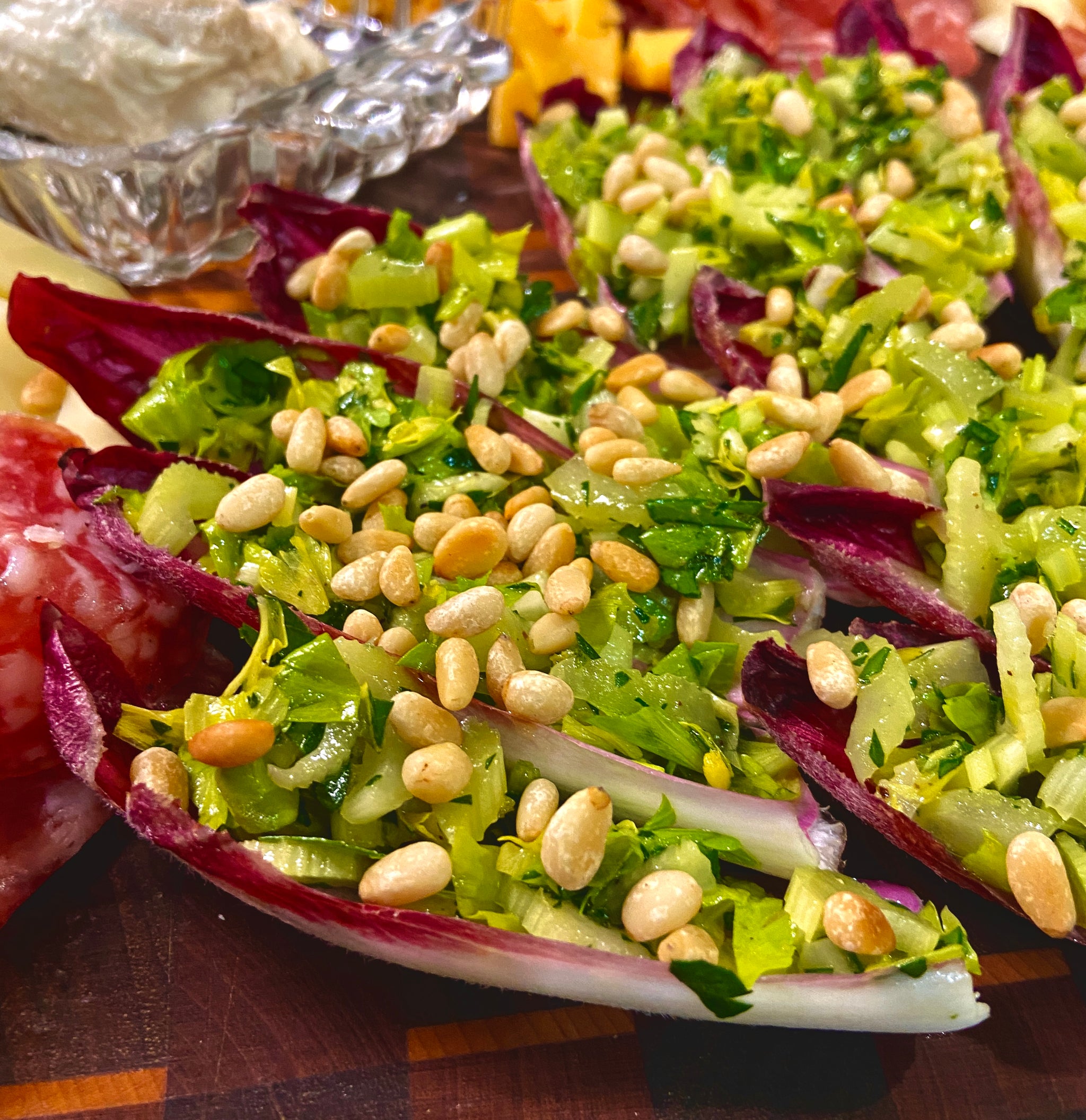
Celery Hearts and Apple Salad:
Ingredients:
1/2 pound celery hearts, thinly sliced
1 apple, thinly sliced
1/4 cup raisins
1/4 cup chopped walnuts
1/4 cup non-fat Greek yogurt
1 tablespoon honey
1 tablespoon lemon juice
Salt and pepper to taste
Directions:
- In a large bowl, combine celery hearts, apple slices, raisins, walnuts, yogurt, honey, and lemon juice.
- Season with salt and pepper to taste.
- Serve chilled or at room temperature.
This refreshing salad is perfect for a summer picnic or potluck. The celery hearts and apples are crisp and crunchy, while the raisins and walnuts add a touch of sweetness. The lemon juice and honey give the salad a tart and tangy flavor, while the yogurt provides a creamy contrast.
Celery Hearts Soup:
Ingredients:
1 tablespoon olive oil
1 onion, chopped
3 cloves garlic, minced
1/2 pound celery hearts, thinly sliced
4 cups chicken or vegetable broth
1 potato, peeled and diced
1 carrot, peeled and diced
Salt and pepper to taste
Directions:
- In a large pot or Dutch oven, heat olive oil over medium heat.
- Add onion and garlic, and cook until softened, about 5 minutes.
- Add celery hearts and cook for an additional 3 minutes.
- Add chicken or vegetable broth, potato, and carrot. Bring to a boil, then reduce heat and simmer for 15 minutes.
- Season with salt and pepper to taste. Serve hot with crusty bread.
This simple soup is perfect for a winter day. The celery hearts add a mild flavor and a touch of sweetness, while the carrots and potatoes provide a hearty dose of vitamins and minerals. The soup can also be easily customized to your liking – feel free to add other vegetables such as corn, peas, or green beans.
Celery Hearts Stir-Fry:
Ingredients:
1 tablespoon sesame oil
1 onion, chopped
3 cloves garlic, minced
1/2 pound celery hearts, thinly sliced
1 cup broccoli florets
1 cup snow peas
1 red pepper, thinly sliced
2 tablespoons soy sauce
Directions:
- In a large wok or frying pan, heat sesame oil over high heat.
- Add onion and garlic, and cook for 2 minutes.
- Add celery hearts and cook for an additional 3 minutes.
- Add broccoli florets, snow peas, red pepper, and soy sauce. Cook for 3-5 minutes until vegetables are tender but still crisp. Serve with rice or noodles.
This stir-fry is a quick and easy way to get your daily dose of veggies. The celery hearts add a crunchy texture, while the broccoli and snow peas provide a pop of color. The red pepper gives the dish a slight spice, while the soy sauce adds a savory flavor. You can also add other vegetables such as mushrooms, bok choy, or water chestnuts.
FAQs
Are Celery Hearts Better For You?
Celery hearts are a good source of vitamins A and C, as well as dietary fiber. They are also low in calories and fat, making them a healthy choice for people who are trying to lose weight or maintain a healthy weight.
Are Celery Hearts Better For You?
Celery hearts are a good source of vitamins A and C, as well as dietary fiber. They are also low in calories and fat, making them a healthy choice for people who are trying to lose weight or maintain a healthy weight. Additionally, the high water content in celery hearts can help to keep you hydrated.
Can You Eat Celery Raw?
Celery can be eaten raw or cooked. To prepare celery for eating, simply wash it under cool running water and trim off any brown spots or blemishes. Celery can then be chopped and added to salads, soups, or stir-fries, or it can be eaten as a healthy snack.
Can You Eat Celery Leaves?
Celery leaves are edible and can be used in the same way as other greens, such as spinach or kale. They are a good source of vitamins A and C, as well as dietary fiber. Celery leaves can be enjoyed raw in salads, or cooked and added to soups, stews, or stir-fries.
How Long Does Celery Last?
Celery will last for up to a week when stored in a plastic bag in the refrigerator. To prolong the life of celery, wrap it in a damp paper towel before placing it in the fridge.
What is the Nutritional Value of Celery?
Celery is a good source of dietary fiber, vitamins A and C, and potassium. It is also low in calories and fat-free.
Can I Freeze Celery Hearts?
Celery hearts can be frozen for up to six months. To freeze celery hearts, wash and chop them, then place them in a plastic bag in the freezer. When you are ready to use them, simply thaw the celery hearts in the refrigerator before adding them to soups, salads, or stir-fries.
What is the Best Way to Store Celery Hearts?
To store celery hearts, wrap them in a damp paper towel and place them in a plastic bag in the refrigerator. Celery hearts will keep for up to a week when stored this way.
Can I Eat Celery Hearts if I am Allergic to Celery?
If you are allergic to celery, you should not eat celery hearts. Celery allergy is caused by a protein in celery called Api g 1. This protein is also found in celery hearts. If you are allergic to Api g 1, you may experience symptoms such as hives, swelling, and difficulty breathing if you eat celery or celery hearts. If you are allergic to celery, it is best to avoid all products that contain this protein.
What is the Difference Between Celery and Celeriac?
Celeriac, also known as celery root, is a type of celery that is grown for its edible root rather than its stalks. Celeriac looks like a small turnip and has a mild celery flavor. It can be eaten raw or cooked and is often used in soups, stews, and salads. Celery, on the other hand, is grown for its crunchy stalks. Celery can be eaten raw or cooked and is often used as a flavoring in soups and stews.
What is the Difference Between Celery Hearts and Celery Stalks?
Celery hearts are the innermost part of the celery plant and are considered to be the most tender and flavorful part of the celery. Celery stalks are the outermost part of the plant and are usually tougher and less flavorful than celery hearts. However, both parts of the plant are good sources of vitamins, minerals, and dietary fiber.
How many stalks are in a celery heart?
A celery heart typically contains 10-12 stalks.
What part of celery should you not eat?
The leaves of the celery plant are poisonous and should not be eaten. The leaves contain a compound called psoralen, which can cause skin irritation and blistering if it comes into contact with the skin. Ingesting large quantities of psoralen can also lead to gastrointestinal upset.
What part of celery has the most flavor?
The innermost part of the celery plant, known as the celery heart, is the most tender and flavorful. The outermost stalks are usually tougher and less flavorful. However, both parts of the plant are good sources of vitamins, minerals, and dietary fiber.
Can you eat too much celery?
While celery is a healthy food, it is possible to eat too much of it. Eating large quantities of celery can lead to gastrointestinal upset and skin irritation. Celery also contains a compound called psoralen, which can cause blistering if it comes into contact with the skin. So, it’s best to eat celery in moderation.
Do you have to peel celery hearts?
No, you do not have to peel celery hearts. Simply wash them well before using them.
What is a good substitute for celery?
If you can’t find celery or celery hearts, you can substitute fennel or parsley. Both of these herbs have a similar flavor to celery.
What is considered 1 stalk of celery?
One stalk of celery is typically about 10-12 inches long.
What kind of celery should I buy?
The best type of celery to buy is fresh, crisp celery. Avoid celery that is wilted or has brown spots.
How do I clean celery?
To clean celery, simply wash it well under cool, running water. You can also scrub the celery with a brush to remove any dirt or debris.
Is it better to buy whole celery or pre-cut celery?
It is usually better to buy whole celery and cut it yourself. Pre-cut celery tends to be less crisp and more expensive than whole celery.
What is the best way to store leftover celery?
Leftover celery can be stored in a plastic bag in the refrigerator. It will keep for about 3-5 days.
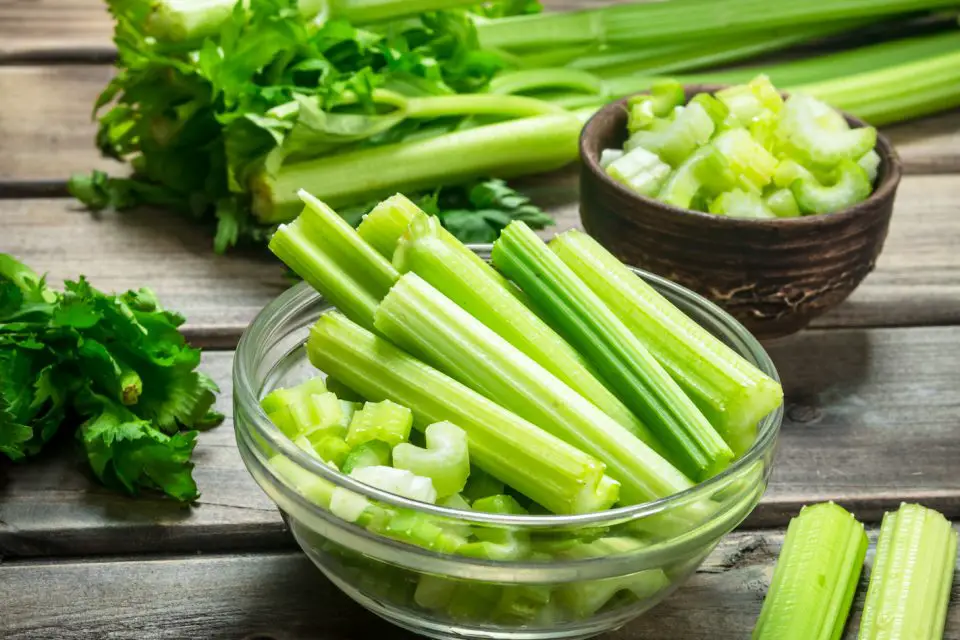
Can celery be frozen?
Yes, celery can be frozen. Simply wash it well, chop it into pieces, and store it in a freezer-safe container. Frozen celery will keep for about 3 months.
What are some popular dishes that contain celery?
Some popular dishes that contain celery include chicken soup, beef stew, and potato salad. Celery is also often used as a garnish or as a crunchy topping for salads.
Why is celery toxic?
Celery is not actually toxic. However, the leaves of the celery plant contain a compound called psoralen, which can cause skin irritation and blistering if it comes into contact with the skin. Ingesting large quantities of psoralen can also lead to gastrointestinal upset. So, it’s best to avoid eating the leaves of the celery plant.
What are some health benefits of celery?
Celery is a good source of vitamins A, C, and K. It is also a good source of dietary fiber. Celery has been shown to have anti-inflammatory properties and may help to lower blood pressure.
Can dogs eat celery?
Yes, dogs can eat celery. Celery is a healthy, low-calorie treat for dogs. However, the leaves of the celery plant are poisonous to dogs and should not be fed to them.
What happens if you eat too much celery?
Eating too much celery can lead to gastrointestinal upset and skin irritation. Celery also contains a compound called psoralen, which can cause blistering if it comes into contact with the skin. So, it’s best to eat celery in moderation.
Are you supposed to wash celery?
Yes, you should wash celery before eating it. Celery is often grown in dirt and can contain harmful bacteria. Washing it well under cool, running water will help to remove any dirt or debris.
When is celery in season?
Celery is in season from July to September.
Do you wash celery before storing it in aluminum foil?
Yes, you should wash celery before storing it in aluminum foil. Celery is often grown in dirt and can contain harmful bacteria. Washing it well under cool, running water will help to remove any dirt or debris.
What happens if you don’t wash celery?
If you don’t wash celery, you may ingest harmful bacteria that could lead to food poisoning. Celery is often grown in dirt and can contain harmful bacteria. Washing it well under cool, running water will help to remove any dirt or debris.
Is organic celery better?
There is no definitive answer as to whether or not organic celery is better than non-organic celery. However, many people believe that organic celery is grown without the use of harmful pesticides and is therefore safer to eat.
Do you wash celery before storing it in aluminum foil?
Yes, you should wash celery before storing it in aluminum foil. Celery is often grown in dirt and can contain harmful bacteria. Washing it well under cool, running water will help to remove any dirt or debris.
How long can you keep celery in the refrigerator?
Celery can be stored in the refrigerator for 3-5 days.
Conclusion
Whether you’re looking for a new vegetable to add to your diet or are simply curious about what celery heart is, we hope this article has been helpful. Celery heart is a healthy and delicious addition to many recipes, so be sure to give it a try! Thanks for reading!
Learn More About Grilling
If you want to learn more about grilling, check out these other helpful resources!

